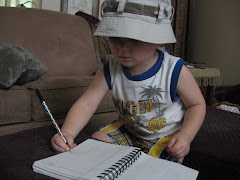Hopkins, L. B. (2003). Alphathoughts: Alphabet poems. Ill. M. Baggetta. Honesdale ,
PA
Lee Bennett Hopkins is an
award-winning poet known not only for the poetry he writes, but for the
anthologies of poetry he has edited. In
fact, he has been so prolific in publishing anthologies of poetry for children
and young adults that he was recognized by the Guinness Book of World Records in
2011 as being the most prolific anthologist with 113 titles to his credit. The National Council of Teachers of English has also created two awards named after Hopkins. One is for the best book of poetry for children and Young Adults published the previous year, and one is given every three years to the most promising new poet for children and young adults.
I chose this book of
alphabet poems written by Hopkins
Each word is accompanied by
a poetic definition, often one that includes some alliteration – a figure of
speech where multiple words start with the same sound – which happens to be one
of my favorite figurative language devices.
For example, notice all the “p” sounds in the description of library:
L
LIBRARY
A
pleasure place
to
ponder
lifelong
dreams
So while none of the poems
rhyme, all of them roll pleasingly off the tongue. And the definitions give young readers
something new to ponder. “B / BOOKS / Pages
/ and / pages / of / bound / forevers” – what does he mean? Corbyn thought about it for a minute, and
then made the connection that he has books that have other children’s names in
them (we shop at Half-Price Books on a regular basis!) and books last forever;
everyone can read them. Lots to think
about in the simple words of the poems on each page.
Corbyn spent one trip
through the book just reading the word for each letter, seeking help when he
got to some that were new to him (“ORNITHOLOGIST” for example). However, then he made the comment that there
were other words on the page and wanted me to read those as well, so we started
back at the beginning and read the descriptions, some of which he wanted to
repeat himself. He reread the words to
“J / JELLY / A / jolly / peanut-butter / playmate” twice, feeling it in his
mouth and hearing it with his ears. The
sounds in this alphabet book are wonderful.
Additionally, Marla
Baggetta’s illustrations are beautiful, brightly-colored creations that catch
the eye and invite the readers into the words on the page. My favorites were “BOOKS,” “IGLOO,”
“LIBRARY,” and “JELLY,” while Corbyn’s were “DOGS,” “GYMNASIUM” and “PENCIL.”
A good way to introduce this
book is to ask students to think about what some of their favorite words
are. List them on the board. Point out the letter that each words starts
with and write the letter separately beside it.
Then read the book to the
students. Read it first from start to
finish without interruption. Then reread
several pages and note places where the alliteration occurs. Read other pages that have particularly good
descriptions of visual images such as the D page:
D
DOGS
With
wagging tails
they
breed
a more
delightful
world
Challenge young students to mentally picture the wagging
tails dogs often have, and how sometimes they wag their tails so hard that their whole body wags. Talk about the words “breed,” and
“delightful.” Then ask students to pick
one of the words from the board, or choose another favorite word they can think
of, and write a description of it. Remind them to think about visual images and the sounds of the words. Even
kindergartners who have just begun to explore spelling and phonics can use invented
spellings to write their descriptions.
Have them illustrate their word and share with the class. Create a class alphabet book with each
student taking a letter to define through poetry and illustrations.
I have collected alphabet
books through the years, but I do not have this one. I can guarantee I will have my own personal
copy in my home library soon. How long I
can claim it as mine remains to be seen.
Many of my books have now ended up on Corbyn’s shelf. I’m sure this will be one that lands there as
well.



No comments:
Post a Comment